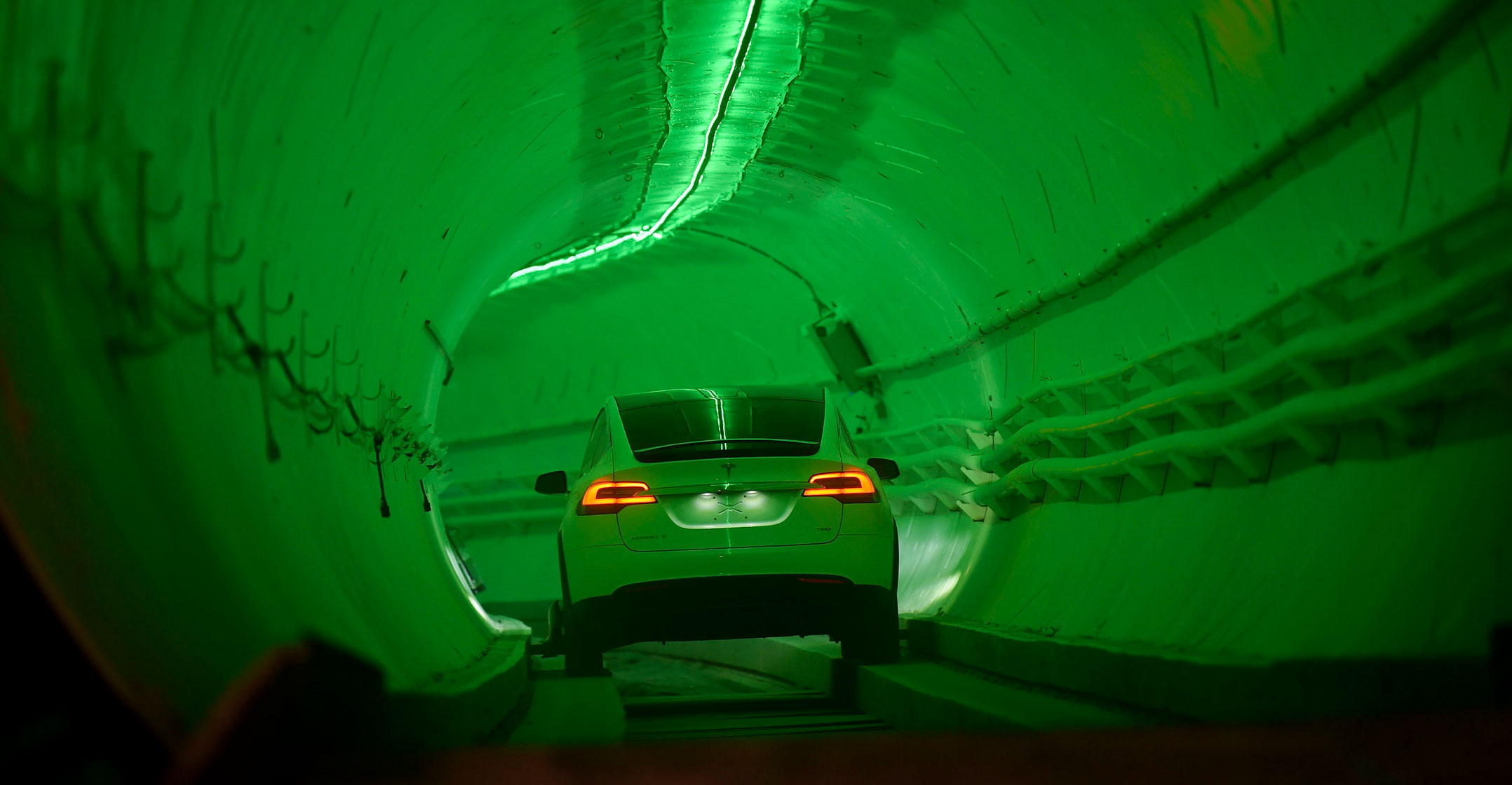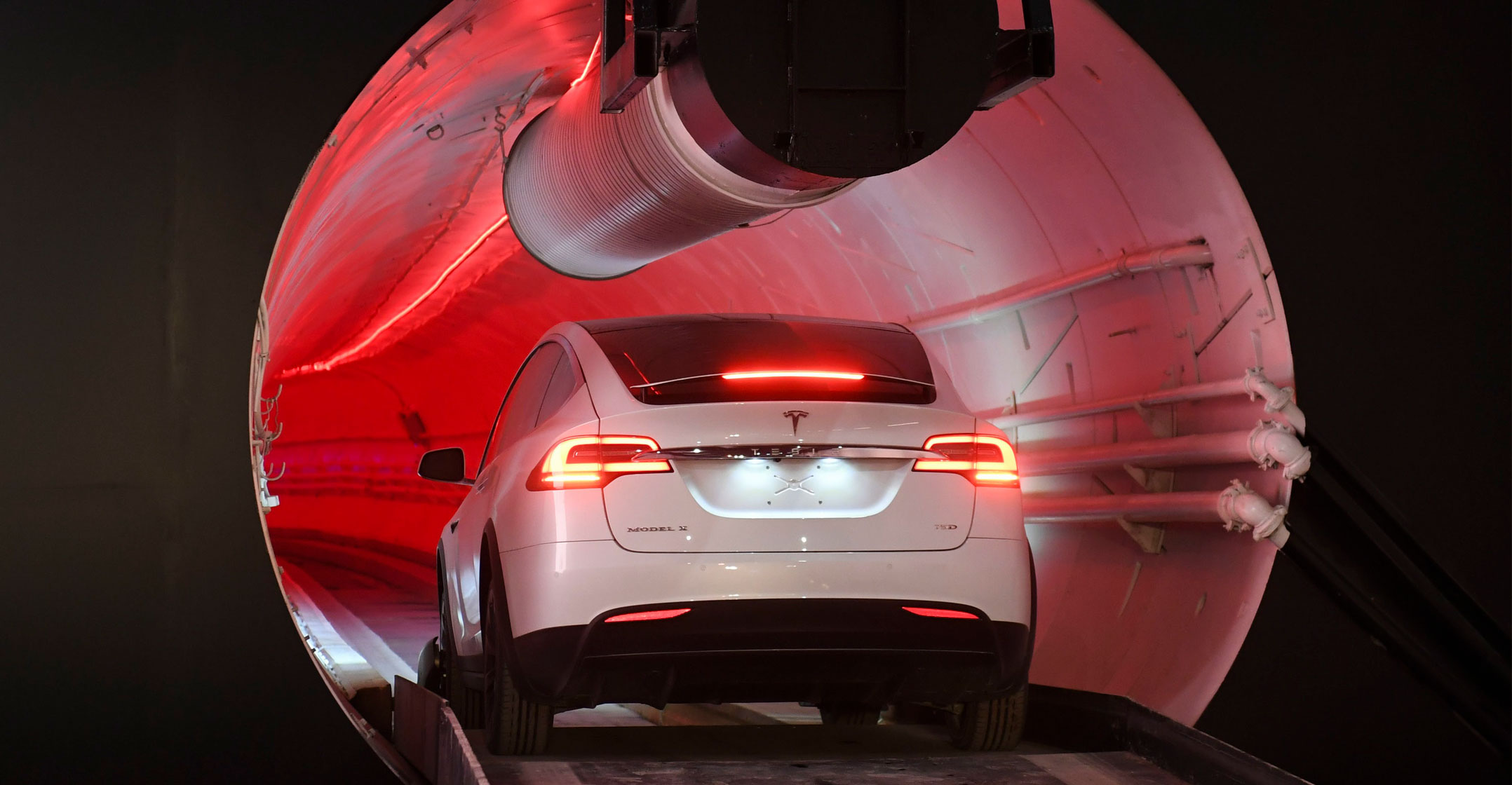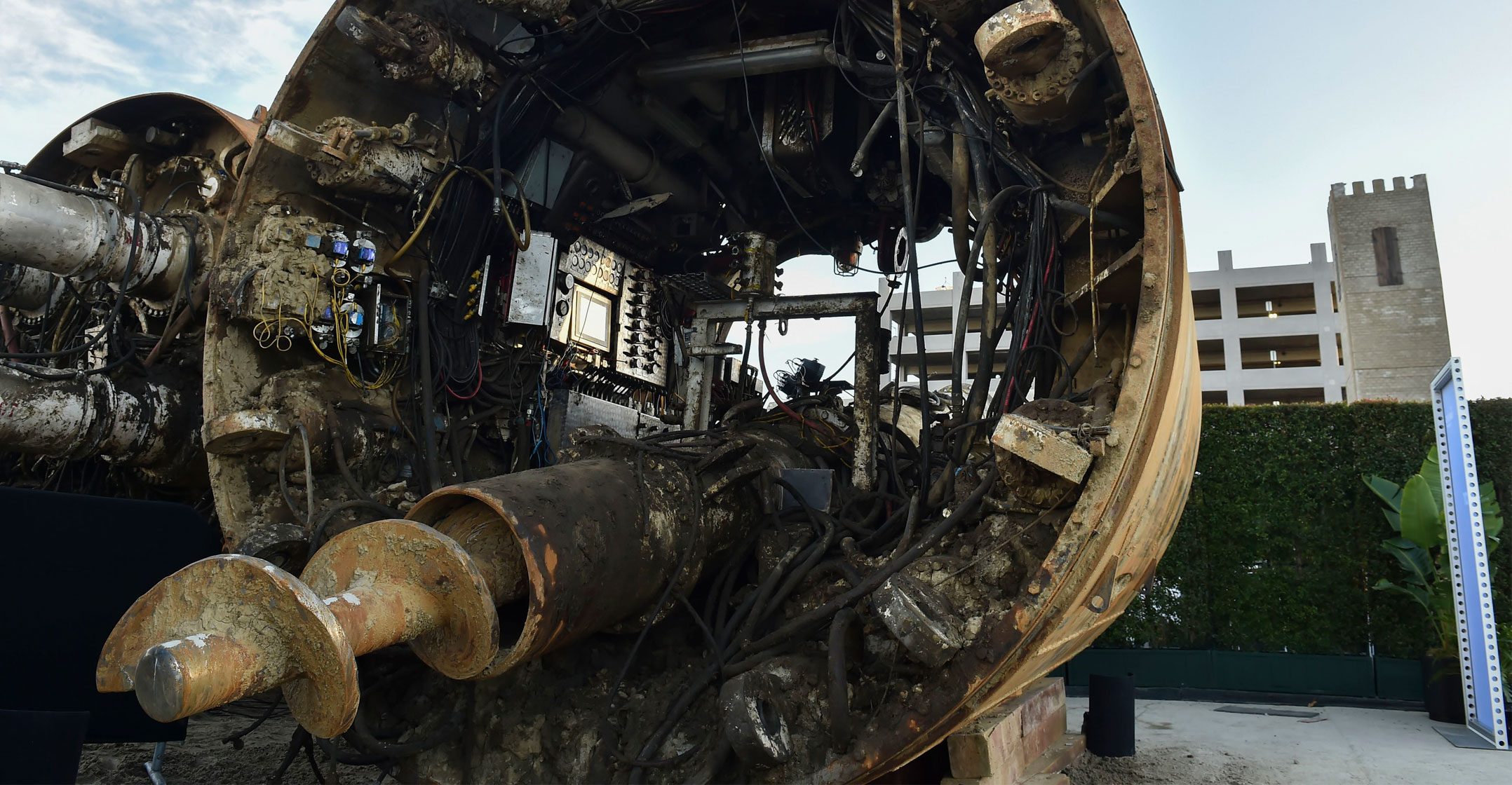 Elon Musk has unveiled his underground transportation tunnel, allowing reporters and invited guests to take some of the first rides in the revolutionary albeit bumpy subterranean tube.
Elon Musk has unveiled his underground transportation tunnel, allowing reporters and invited guests to take some of the first rides in the revolutionary albeit bumpy subterranean tube.
Guests boarded Musk’s Tesla Model S and rode along Los Angeles-area surface streets about 1.6km away from what is known as O’Leary Station.
The station, smack dab in the middle of a residential neighbourhood — “basically in someone’s backyard,” Musk says — consists of a wall-less lift that slowly took the car down a wide shaft, roughly 10 metres below the surface.
The sky slowly fell away and the surprisingly narrow tunnel emerged.
“We’re clear,” said the driver, who sped up and zipped into the tunnel when a red track light turned green, making the tube look like something from space or a dance club.
The car jostled significantly during the ride, which was bumpy enough to give one reporter motion sickness while another yelled, “Woo!”
Musk described his first ride as “epic”.
“For me it was a eureka moment,” he told a roomful of reporters. “I was like, ‘This thing is going to damn well work’.”
He said the rides are bumpy now because “we kind of ran out of time” and there were some problems with the speed of his paving machine.
‘Smooth as glass’
“It’ll be smooth as glass,” he said of future systems. “This is just a prototype. That’s why it’s a little rough around the edges.”
The demo rides were also considerably slower — 65km/h — than what Musk says the future system will run at: 250km/h.
Still, it took only three minutes to go just over 1.6km from the beginning to the end of the tunnel, the same amount of time it took to accomplish a right-hand turn out of the car park and on to a surface street even before the height of Los Angeles’ notorious rush-hour traffic.
The tunnel is just a test to prove the technology works and could one day cure traffic.

Tuesday’s reveal comes almost two years to the day since Musk announced on Twitter that “traffic is driving me nuts” and he was “going to build a tunnel boring machine and just start digging”.
“I am actually going to do this,” he added in response to initial scepticism, a tweet that was blown up and posted near the entrance to the tunnel for Tuesday’s event, along with other Musk tweets like, “Defeating traffic is the ultimate boss battle.”
The tweets were a nod to Musk’s sense of humour.
Just after announcing he was creating a tunnel, he began The Boring Company, tongue in cheek intentional. Since his announcement, Musk has only revealed a handful of photos and videos of the tunnel’s progress.
On Tuesday, he explained for the first time in minute detail just how the system, which he simply calls “loop”, could work on a larger scale beneath cities across the globe.
Autonomous, electric vehicles could be lowered into the system on wall-less elevators the size of two cars. Such elevators could be placed almost anywhere cars can go.
A number of autonomous cars would remain inside the system just for pedestrians and bicyclists. Once on the main arteries of the system, every car could run at top speed except when entering and exiting.
“It’s much more like an underground highway than it is a subway,” he said. “It’s not like you’re going through a whole series of stops. Nope, the main arteries will be going super fast, and it’s only when you want to get off the loop system that you slow down.”
Special wheels
Musk said he scrapped his previous plan to run the cars on platforms called skates.
Instead, the cars would have to be fitted with specially designed side wheels that pop out perpendicularly to the car’s regular tyres and run along the tunnel’s track. The cost for such wheels would be about US$200-300/car, Musk said.
He said tunnels are the safest place to be in earthquakes — sort of like a submarine during a hurricane is safest beneath the surface — and addressed other concerns such as the noise and disruption of building the tunnels, which he completely dismissed.
When workers bored through the end of the test tunnel, for instance, the people in the home six metres away “didn’t even stop watching TV”.

“The footsteps of someone walking past your house will be more noticeable than a tunnel being dug under your house,” he said.
Musk said it took about $10-million to build the test tunnel, a far cry from $1-billion per mile his company says most tunnels take to build.
Musk explained just how he is cutting costs. Measures include improving the speed of construction with smarter tools, eliminating middlemen, building more powerful boring machines, and instead of hauling out all the dirt being excavated, Musk is turning them into bricks and selling them for 10c.
He reiterated the simplicity of all his ideas. “No Nobel Prize is needed here,” he said. “It’s very simple.”
And he is not doing it for the money, he said, adding that it is for the greater good. “Traffic is a blight on everyone’s life in all cities,” he said. “I really think this is incredibly profound. Hopefully that is coming across.”
Musk’s vision for the underground tunnels is not the same as another of his transportation concepts known as Hyperloop. That would involve a network of nearly airless tubes that would speed special capsules over long distances at up to 1 200km/h, using a thin cushion of air, magnetism and solar power.
The loop system is designed for shorter routes that would not require the elimination of air friction, according to The Boring Company.




